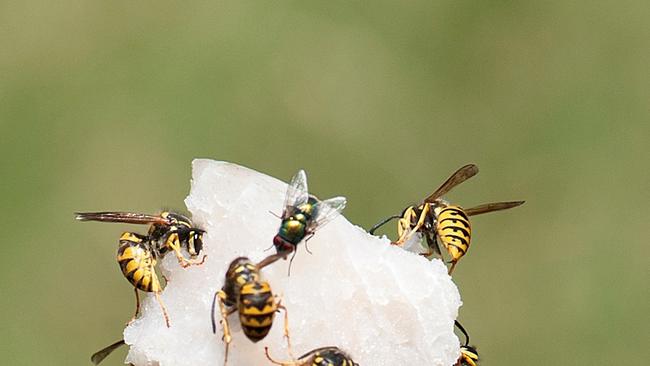Influx of European wasps in the Eurobodalla Shire
The south coast is facing an influx of “extremely dangerous” European wasps, with the aggressive insects establishing nests in homes right along the state.

The South Coast News
Don't miss out on the headlines from The South Coast News. Followed categories will be added to My News.
The south coast has been experiencing an influx of “extremely aggressive” European wasps in recent weeks, causing concern among residents and the council.
The Eurobodalla Shire has seen a major increase in the wasps, with residents reporting nests from Narooma to Batemans Bay.
Myrle Payne from Bates Pest Control in Batemans Bay said the wasps were settling in the south coast due to the warmer weather.
“It’s been warm recently, which they love,” she said.
Mrs Payne warned residents to stay away from European wasp nests, due to the aggressive behaviour of the bugs.
“These wasps are far more aggressive than a normal native wasp,” she said.
“They mainly create their nests indoors or in the ground, you will rarely see a European wasp nest outside because they love the dry conditions indoors.”

The calls have began to slow down for Mrs Payne as colder weather rolls in, however she said the issue was “far from over”.
“We went out to a job last week in Malua Bay where it was the biggest nest ever,” she said.
“It had eight entry points with hundreds of wasps.”
The wasps were first introduced to Australia in 1959, when hibernating queens were unintentionally stowed in ships.
Since then, they have been spotted in every state.

Mrs Payne said the wasps were known for their painful stings, which could be irritated for days.
“We had some of the guys stung at the Malua Bay job and the stings were incredibly itchy for quite a long time,” she said.
“The stings are also incredibly painful, far more than a bee sting or paper wasp.”
Unlike bees, which die as soon as they sting, European wasps will remain alive and can continue to harm.

Mrs Payne said it was important to know the difference between a honey bee and a wasp.
“We’ve had quite a few people mistake the two and believe me, I would much rather run into a bee,” she said.
European wasps are skinnier and longer than honey bees.
“They also don’t have that furry body that bees have,” Mrs Payne said.
“But I wouldn’t want to stand close enough to look at one to decipher that.”

Eurobodalla Shire Council said they were aware of the problem and had advised residents to be cautious when they dealt with the pests.
However, a council spokesman said it was best to call the “professionals” to remove the nests on private property.
“All pest control, including for European wasps, is the responsibility of property owners,” they said.
“Council attends European wasps on council-managed land and will assist in other situations where the wasps pose risk to the public.
“Our invasive species officers are always willing to help with advice on control and even assist where appropriate, but large nests require the specialised equipment of professional pest controllers.”





